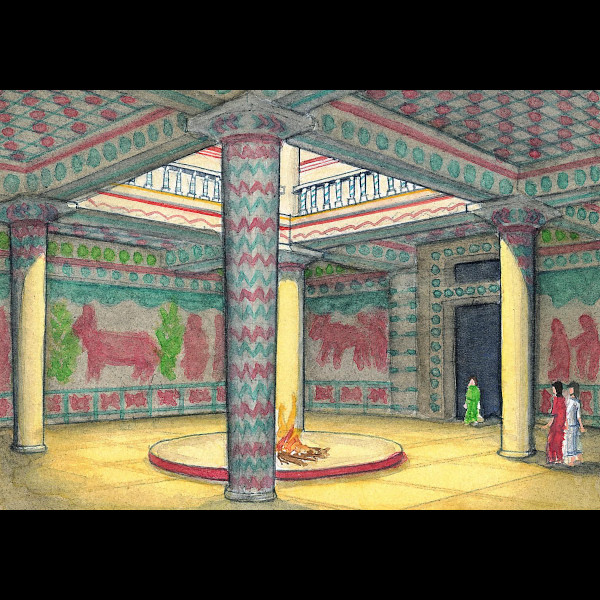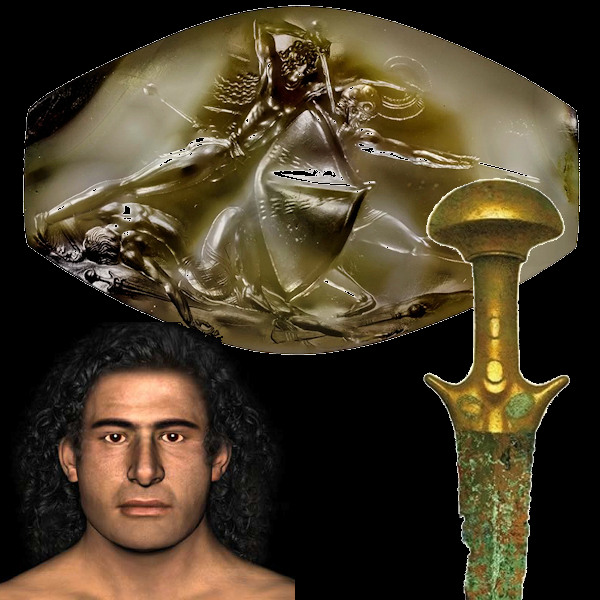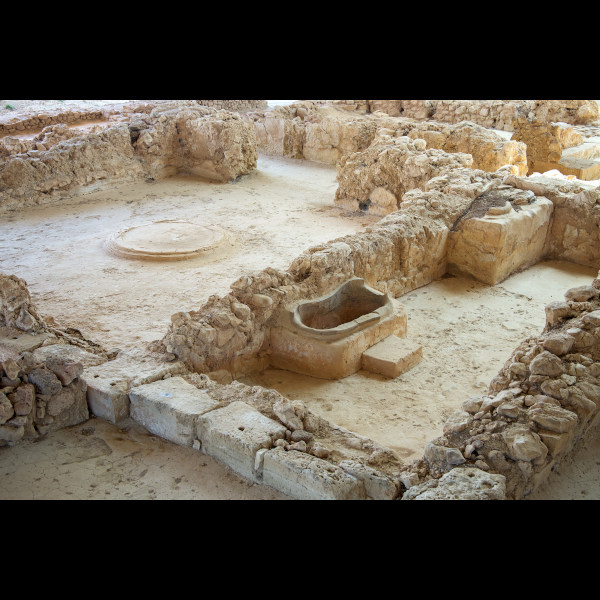DNA spotlight
The Griffin Warrior and Palace of Nestor
Pylos, located in southwest Greece was an important center of Ancient Greece - described in Homers Odyssey and Iliad as Nestors kingdom of sandy Pylos. High up on the hills above with a commanding view of the Mediterranean Sea an ancient site was discovered - the Palace of Nestor. Not only representing the best preserved Mycenaean Greek palace ever discovered, the primary structure consisted of a two-storey building with store rooms, workshops, baths, light wells, reception rooms and a working sewage system. Touch here to see the a 3-D rendering of the extraordinary palace - built by King Nestor, son of Neleus, who was an Argonaut portrayed in Homeric epics. He had led Pylos to the Trojan War with 90 ships and was highly respected by the Achaeans who had ultimately defeated the Trojans. Keep in mind all of these events pre-dated classical Greece by several hundred years.

It appears the palatial complex was destroyed by a fire in 1200 BC. Over 1000 tablets were discovered with Linear B text - which led to a breakthrough in understanding this ancient language which was shown to be an archaic form of Greek. The deciphered tablets confirmed the palace had served as the administrative, political and financial center of Mycenaean Messinia serving a population of 50,000 people in ancient times. The complex had over 105 ground floor apartments with four main buildings. The large rectangular throne room being the most important. The halls were decorated with remarkable wall paintings and the palatial floors covered with pictorial representations. The storerooms and pantries contained thousands of unused cermamic wine cups as well as workshops for production of leather and perfumed oils.

Incredibly an untouched tomb was discovered nearby containing the richly furnished grave of a Mycenaean warrior. The Griffin Warrior was named after the artifacts uncovered - which included a griffin decorated ivory plaque, bronze weapons, armor, basins, gold and silver cups, hundreds of beads of amethyst, gold, amber, carnelian - as well as 50 stone seals including intricately carved lions, bulls and goddesses - this was the richest Mycenaean grave uncovered in a hundred years! The skeleton was of a man in his early 30s whose skeletal remains indicate he had very strong muscles. DNA analysis enabled a computerized facial reconstruction of his skull shown here. The richly decorated ring amazingly depicts the Griffin Warrior himself fighting his enemies and wielding the same sword he was buried with.

The Mycenaeans were the very first Greek organized society whose kingdom exploded out of nowhere on the Greek mainland in 1600 BC. Unimaginable treaures started to appear in Greek tombs at this time - just like in the case of the Griffin Warrior. Clear is as the Minoan civilization on Crete collapsed, the mainland Greek civilization flourished. It is believed the Mycenaeans sacked Knossos - the capital of the Minoans and brought their treasures back to the mainland. The Griffin warrior may have himself taken part. The ruins of the palace were recently re-opened to the public complete with a protective shelter overhead and an elevated walkway. Many of the archaeological findings from inside the Palace are kept at the Archaeological Museum of Chora nearby as well as the Archaeological Museum of Messinia. Are you related to the Griffin Warrior or any of the other Ancient Mycenaeans found in the Palace of Nestor? If so take pride and plan a visit!
Sample: Griffin Warrior Elite Palace of Nestor Pylos Ancient Greece
- Sample ID: I13519_d
- Year: 1440 BC
- Sex: Male
- Location: 37.026797,21.694586
Sample: Mycenaean Palace of Nestor Pylos Ancient Greece
- Sample ID: I13518
- Year: 1135 BC
- Sex: Male
- Location: 37.026797,21.694586
Sample: Mycenaean Palace of Nestor Pylos Ancient Greece
- Sample ID: I13506
- Year: 1135 BC
- Sex: Male
- Location: 37.026797,21.694586
Sample: Mycenaean Palace of Nestor Pylos Ancient Greece
- Sample ID: I13514
- Year: 1215 BC
- Sex: Female
- Location: 37.026797,21.694586
Sample: Mycenaean Palace of Nestor Pylos Ancient Greece
- Sample ID: I19364
- Year: 1135 BC
- Sex: Male
- Location: 37.026797,21.694586
Sample: Mycenaean Palace of Nestor Pylos Ancient Greece
- Sample ID: I19368
- Year: 1010 BC
- Sex: Female
- Location: 37.026797,21.694586
Sample: Mycenaean Palace of Nestor Pylos Ancient Greece
- Sample ID: I13513_d
- Year: 1215 BC
- Sex: Male
- Location: 37.026797,21.694586
Sample: Mycenaean Palace of Nestor Pylos Ancient Greece
- Sample ID: I13510
- Year: 1330 BC
- Sex: Male
- Location: 37.026797,21.694586
Sample: Mycenaean Palace of Nestor Pylos Ancient Greece
- Sample ID: I13516
- Year: 1385 BC
- Sex: Female
- Location: 37.026797,21.694586
Sample: Mycenaean Palace of Nestor Pylos Ancient Greece
- Sample ID: I19366
- Year: 1330 BC
- Sex: Female
- Location: 37.026797,21.694586
Sample: Mycenaean Palace of Nestor Pylos Ancient Greece
- Sample ID: I13517_d
- Year: 1385 BC
- Sex: Male
- Location: 37.026797,21.694586



